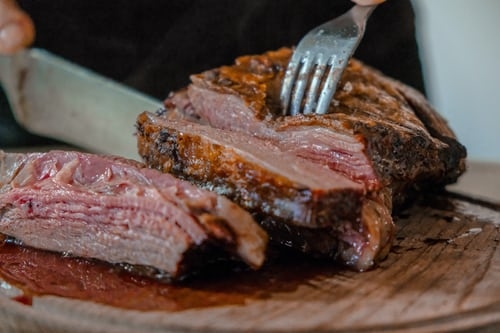Delicious hamburgers and juicy steaks are set to become a favorite soon, as their prices, already close to record highs, will rise even further.
The culprit, according to a Wall Street Journal report, is rapidly declining cattle population. After the “hit” of drought in recent years, which made raising animals more expensive, as well as disruptions in the global economy – thanks to the pandemic – with rising cost of living breeders are being forced to dump their cattle, bringing cattle numbers in the US to their lowest level in nearly a decade. U.S. beef production will fall by more than 2 billion pounds in 2024, the biggest annual decline since 1979, according to the USDA.
With costs rising for nearly every aspect of raising cattle, ranchers say they have no reason to restart production after they have sent their herds to the slaughterhouse. “We spend $1 million to make $4,000,” said Ryan Stromberger, a rancher in southwest Nebraska.
With less beef available, consumers should not expect less value just yet. Prices for ground beef have risen by more than 20% since 2020 and could hit record highs this summer, during peak BBQ season.
Prices appear to be “testing” America’s appetite for beef, which has continued to rise in recent years despite years of health debate, attention to the impact of raising cattle on the climate and greater availability of plant-based protein, grocery store executives said. “There is no doubt that as the price of meat rises (when consumers are used to buying it at a certain price), people will change their habits,” said Kroger CEO Rodney McMullen. He added that when steaks start to reach a certain price, they can become a luxury item.
The rancher raises calves and sells them. In feedlots, cattle are sold to meat processing companies, who slaughter the animals and sell the meat to food companies, retailers, or restaurants. A failure in one part of the supply chain can affect the entire system.
In early 2020, meatpacking plants temporarily closed factories during the Covid-19 pandemic. The facility’s daily production has been temporarily reduced by as much as 45%, according to the USDA. Over the next year, meat processors reported that they were having trouble hiring enough workers to keep their factories running at full capacity.
The ranchers kept livestock, but this added to the cost. When they could send their cattle to meat processing, they received less for the animals due to their oversupply. At the end of the chain, beef prices jumped to record highs as processors could not provide enough of the end product.
Last year, the supply of meat products (beef) recovered, as the labor shortage problem began to stabilize in the industry. Meatpacking plants offered workers higher wages and other benefits, increasingly automating the production process.
Livestock prices rose for ranchers, but by then inflation had pushed up the price of fuel, feed, and equipment. Severe drought in many key pastoralist states such as Nebraska, Oklahoma and Texas has driven up costs.
As farm costs rise, some ranchers are opting to cut back on livestock. This is a big gamble, because when the landscape is reversed, recovery is slow: it takes 18 to 22 months to grow cattle to the required weight.
Beef production is expected to decline by more than 5% from last year, the first annual decline since 2015, according to a USDA forecast.







More Stories
Fruits and vegetables: imports up 50.2% in April
Greek products on their way to France
Reduced fees for POS transactions, limited bank fees